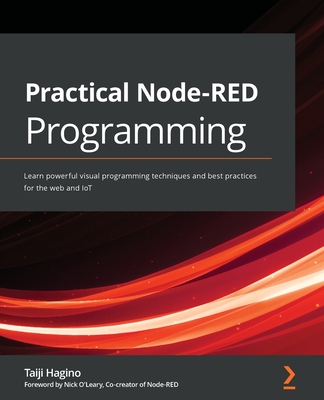相關主題
商品描述
Every solution that is in some way related to the IoT needs a platform; learn how to create that platform with us. This book is about being agile and reducing your time to market without breaking the bank. It is about designing something that can scale incrementally without rework and potentially disrupting the current work.
So, the key questions are: What does it take? How long does it take? And, how much does it take to build your own IoT platform? This book answers these questions and provides you with step-by-step guide to building your own IoT platform.
In this book, the author highlights what the core of an IoT platform looks like. There are always some must-haves and some nice-to-haves. This book distinguishes the two and focuses on building the must-haves. Building your IoT platform is not only the most significant cost-saver but can also be a satisfying learning experience. This edition will extend your work with a sample project to clarify the concepts and show you the possibilities. Additional chapters will also shed some light on the hardware interface and considerations.
What You Will Learn
· Master how to architect an interconnected system and develop a flexible platform architecture
· Understand how to prioritize system requirements with a bottom-up approach
· Design and build a robust IoT communications platform
· Create an end-to-end application using guidelines in this book
Who Is This Book For
IoT developers with basic-to-intermediate programming skills, small business owners, as well as entrepreneurs and startup founders would benefit from this book
作者簡介
Anand is an award-winning author, innovator, professional speaker, and futurist. A sought-after thought leader, he helps people adapt, leverage technology, and transform with the power of creativity and innovation.
Anand specializes in areas that intersect technology and people. As a technology, innovation, and transformation specialist, he is well-known for bringing ideas and strategies to life.
Being a polymath, he often sheds new light on a topic you think is "done to death." Having worked with several Fortune 500 multinationals for the past two decades, he has cross-industry, multi-cultural experience.
目錄大綱
Chapter 1: So... You Want to Build Your Own!
- The Background of IoT and Our Focus
- How Many Platforms Are Out There?
- Platforms Supporting Network Servicing
- Platforms Sitting Between Networks and Applications
- Application-Layer Development Platforms
- What Should a Good IoT Platform Have?
- Why Should You Build Your Own IoT Platform?
- Summary
Chapter 2: The Building Blocks of an IoT Solution
- The Functional Blocks of an IoT Solution
- The Detailed Block Diagram of an IoT Platform
- Is Everything from this Block Architecture Mandatory?
- What Is the Proposed Approach?
- Summary
Chapter 3: The Essentials for Building Your Own Platform
- Deciding Cloud Instance Specifics
- Additional Specifications
- Where Do We Get this Cloud Instance?
- What About Our Own Machine?
- Expanding on the IoT Platform Block Diagram
- Edge Interface, Message Broker, and Message Bus
- Message Router and Communications Management
- Time-Series Storage and Data Management
- REST API Interface
- Microservices
- Rule Engine
- Device Manager and Application Manager
- Our Own IoT Platform Block Diagram
- Summary
Chapter 4: Let's Create Our Platform Wish List
- Connecting with the Platform in Real Time
- Using MQTT as the Message Broker
- How Do We Want to Store the Data?
- Data Storage Schema
- Accessing Platform Resources Through APIs
- Data Accessing APIs
- Elementary Microservices and Utilities
- Routing and Filtering Data and Messages
- Updated Block Diagram of Our IoT Platform
- Summary
Chapter 5: Here We Go!
- Initializing the Cloud Instance
- Register and Create
- Choosing an Operating System











